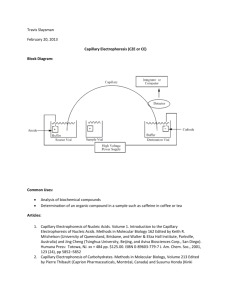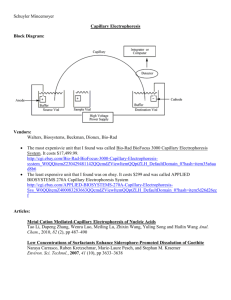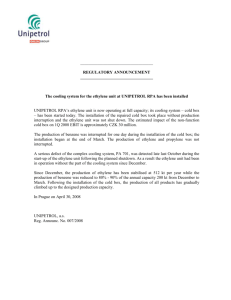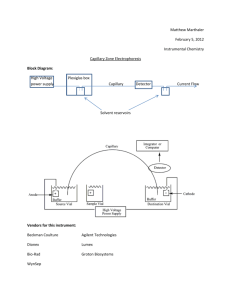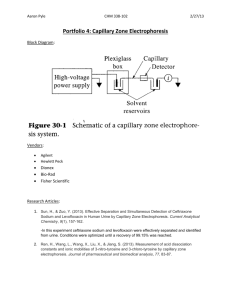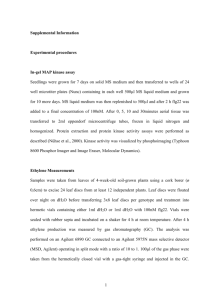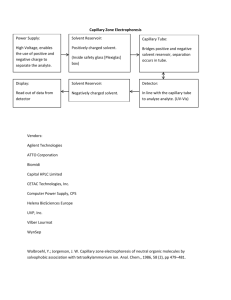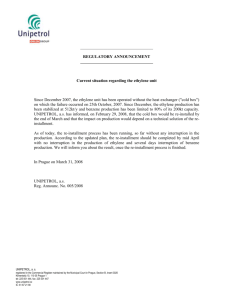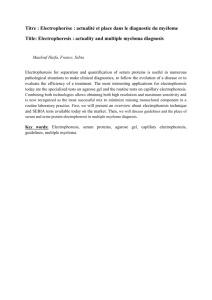In our lab we were able to identify s-adenosyl-L-methionie
advertisement
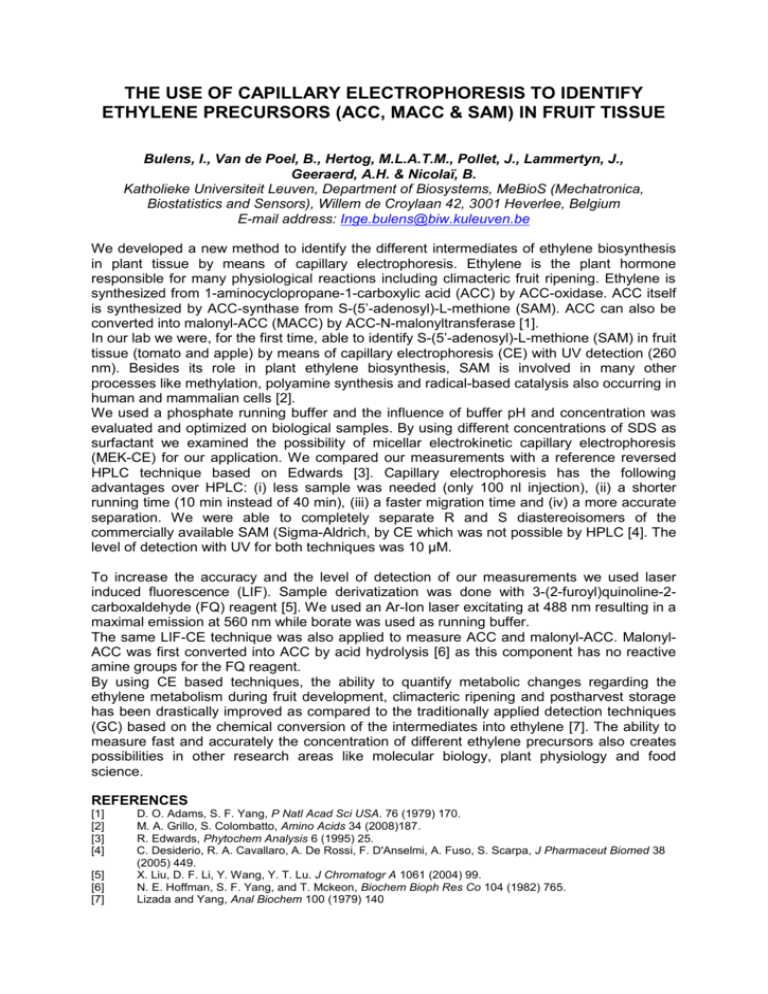
THE USE OF CAPILLARY ELECTROPHORESIS TO IDENTIFY ETHYLENE PRECURSORS (ACC, MACC & SAM) IN FRUIT TISSUE Bulens, I., Van de Poel, B., Hertog, M.L.A.T.M., Pollet, J., Lammertyn, J., Geeraerd, A.H. & Nicolaï, B. Katholieke Universiteit Leuven, Department of Biosystems, MeBioS (Mechatronica, Biostatistics and Sensors), Willem de Croylaan 42, 3001 Heverlee, Belgium E-mail address: Inge.bulens@biw.kuleuven.be We developed a new method to identify the different intermediates of ethylene biosynthesis in plant tissue by means of capillary electrophoresis. Ethylene is the plant hormone responsible for many physiological reactions including climacteric fruit ripening. Ethylene is synthesized from 1-aminocyclopropane-1-carboxylic acid (ACC) by ACC-oxidase. ACC itself is synthesized by ACC-synthase from S-(5’-adenosyl)-L-methione (SAM). ACC can also be converted into malonyl-ACC (MACC) by ACC-N-malonyltransferase [1]. In our lab we were, for the first time, able to identify S-(5’-adenosyl)-L-methione (SAM) in fruit tissue (tomato and apple) by means of capillary electrophoresis (CE) with UV detection (260 nm). Besides its role in plant ethylene biosynthesis, SAM is involved in many other processes like methylation, polyamine synthesis and radical-based catalysis also occurring in human and mammalian cells [2]. We used a phosphate running buffer and the influence of buffer pH and concentration was evaluated and optimized on biological samples. By using different concentrations of SDS as surfactant we examined the possibility of micellar electrokinetic capillary electrophoresis (MEK-CE) for our application. We compared our measurements with a reference reversed HPLC technique based on Edwards [3]. Capillary electrophoresis has the following advantages over HPLC: (i) less sample was needed (only 100 nl injection), (ii) a shorter running time (10 min instead of 40 min), (iii) a faster migration time and (iv) a more accurate separation. We were able to completely separate R and S diastereoisomers of the commercially available SAM (Sigma-Aldrich, by CE which was not possible by HPLC [4]. The level of detection with UV for both techniques was 10 µM. To increase the accuracy and the level of detection of our measurements we used laser induced fluorescence (LIF). Sample derivatization was done with 3-(2-furoyl)quinoline-2carboxaldehyde (FQ) reagent [5]. We used an Ar-Ion laser excitating at 488 nm resulting in a maximal emission at 560 nm while borate was used as running buffer. The same LIF-CE technique was also applied to measure ACC and malonyl-ACC. MalonylACC was first converted into ACC by acid hydrolysis [6] as this component has no reactive amine groups for the FQ reagent. By using CE based techniques, the ability to quantify metabolic changes regarding the ethylene metabolism during fruit development, climacteric ripening and postharvest storage has been drastically improved as compared to the traditionally applied detection techniques (GC) based on the chemical conversion of the intermediates into ethylene [7]. The ability to measure fast and accurately the concentration of different ethylene precursors also creates possibilities in other research areas like molecular biology, plant physiology and food science. REFERENCES [1] [2] [3] [4] [5] [6] [7] D. O. Adams, S. F. Yang, P Natl Acad Sci USA. 76 (1979) 170. M. A. Grillo, S. Colombatto, Amino Acids 34 (2008)187. R. Edwards, Phytochem Analysis 6 (1995) 25. C. Desiderio, R. A. Cavallaro, A. De Rossi, F. D'Anselmi, A. Fuso, S. Scarpa, J Pharmaceut Biomed 38 (2005) 449. X. Liu, D. F. Li, Y. Wang, Y. T. Lu. J Chromatogr A 1061 (2004) 99. N. E. Hoffman, S. F. Yang, and T. Mckeon, Biochem Bioph Res Co 104 (1982) 765. Lizada and Yang, Anal Biochem 100 (1979) 140


